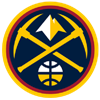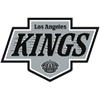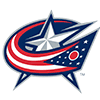The fantasy community loves to talk about how to improve counting stats. They also are all over pitching analysis, which is ostensibly purposed to improve pitching ratios. Conspicuous by its absence is any discussion about raising batting average.
To help fill the void, I posed the following question to the near 100 participants in Tout Wars, with the replies posted in our weekly Tout Table:
How do you go about improving in the batting average (OBP) category?
Please keep in mind the Tout Wars leagues are all of the OBP variety, and there could be nuances to how the two different categories are handled. The Touts were free to take it any direction they desired.
When adding my own reply, I realized there was so much I wanted to share. There's a game theory component, as well as roster management and old-fashioned player analysis. No problem, I have this Z Files thing where I can go into detail.
Before delving into some tactics, let's get a feel for the big picture, as batting average (and OBP) is a unique category. I've presented this previously, so by means of reminder, batting average is the most tightly bunched category. The best way to show this is via normalized standings. This entails taking typical standings (I'm using the NFBC Main Event) and setting each category to 1000 total units. That is, the total units for the 15 teams in each category is 1000, with the distribution proportional to the composite standings. Ratios are
The fantasy community loves to talk about how to improve counting stats. They also are all over pitching analysis, which is ostensibly purposed to improve pitching ratios. Conspicuous by its absence is any discussion about raising batting average.
To help fill the void, I posed the following question to the near 100 participants in Tout Wars, with the replies posted in our weekly Tout Table:
How do you go about improving in the batting average (OBP) category?
Please keep in mind the Tout Wars leagues are all of the OBP variety, and there could be nuances to how the two different categories are handled. The Touts were free to take it any direction they desired.
When adding my own reply, I realized there was so much I wanted to share. There's a game theory component, as well as roster management and old-fashioned player analysis. No problem, I have this Z Files thing where I can go into detail.
Before delving into some tactics, let's get a feel for the big picture, as batting average (and OBP) is a unique category. I've presented this previously, so by means of reminder, batting average is the most tightly bunched category. The best way to show this is via normalized standings. This entails taking typical standings (I'm using the NFBC Main Event) and setting each category to 1000 total units. That is, the total units for the 15 teams in each category is 1000, with the distribution proportional to the composite standings. Ratios are treated as counting stats, albeit with the false presumption the denominator is the same for each team. Still, for the purpose of this exercise, it's a reasonable approach.
| Place | BA | HR | R | RBI | SB | W | SV | K | ERA | WHIP |
|---|---|---|---|---|---|---|---|---|---|---|
| 1 | 67.7 | 75.4 | 74.0 | 74.8 | 72.3 | 73.5 | 65.8 | 74.4 | 69.4 | 68.9 |
| 2 | 67.1 | 70.7 | 70.5 | 70.0 | 68.6 | 72.4 | 67.4 | 71.5 | 70.6 | 69.1 |
| 3 | 67.6 | 73.1 | 71.8 | 71.7 | 73.0 | 72.4 | 65.8 | 69.6 | 67.6 | 67.3 |
| 4 | 66.9 | 68.8 | 68.4 | 68.6 | 71.5 | 75.5 | 72.1 | 71.9 | 69.4 | 68.3 |
| 5 | 67.5 | 69.8 | 68.2 | 68.5 | 70.1 | 67.3 | 72.1 | 68.2 | 69.8 | 68.4 |
| 6 | 67.2 | 69.5 | 69.5 | 69.8 | 67.2 | 66.3 | 64.3 | 67.0 | 66.4 | 66.8 |
| 7 | 66.6 | 65.5 | 65.2 | 65.6 | 64.3 | 67.3 | 69.0 | 67.5 | 67.7 | 67.2 |
| 8 | 66.7 | 66.0 | 66.7 | 65.6 | 67.2 | 67.3 | 67.4 | 65.8 | 67.0 | 66.6 |
| 9 | 67.0 | 64.1 | 65.7 | 65.1 | 63.6 | 67.3 | 64.3 | 65.9 | 65.6 | 65.8 |
| 10 | 66.0 | 65.7 | 65.5 | 65.9 | 67.9 | 66.3 | 75.2 | 67.3 | 67.0 | 67.2 |
| 11 | 66.6 | 64.1 | 64.9 | 65.0 | 65.8 | 62.2 | 73.7 | 63.1 | 65.7 | 66.1 |
| 12 | 66.7 | 62.9 | 63.8 | 64.0 | 64.3 | 65.3 | 64.3 | 65.3 | 64.2 | 65.3 |
| 13 | 65.4 | 61.9 | 61.6 | 62.1 | 57.1 | 59.2 | 61.1 | 62.9 | 63.2 | 64.7 |
| 14 | 65.9 | 62.9 | 64.5 | 63.5 | 67.9 | 58.2 | 56.4 | 60.7 | 63.2 | 64.4 |
| 15 | 65.3 | 59.8 | 59.7 | 59.8 | 59.2 | 59.2 | 61.1 | 59.0 | 63.1 | 63.9 |
| Diff | 2.5 | 15.7 | 14.3 | 15.0 | 13.0 | 14.3 | 4.7 | 15.4 | 6.3 | 5.0 |
Note the batting average delta is by far the smallest. Sure, as the season progresses, the accumulation of at-bats (or plate appearances) makes it harder to shift up or down, but there doesn't need to be much activity for teams to shuffle. Plus, teams ahead of you can move down by having their average (or OBP) drop, something that isn't possible with counting stats.
That said, just as it is with any category, it's all about your team's placement, and how close you are to the neighboring teams. Composite standings are useful, but each league settles into its own distributions. The gaps and tightly bunched teams will differ per league. For some squads, another .002 points in batting average could equate to three or four points in the standings. In other leagues, it gets you nothing.
With that as a backdrop, here are some of things I do to try and generate improvement in BA or OBP.
Why?
It's imperative to determine the root of your team's deficiency, since there is a chance the fix will be organic. Do you have a few players carrying a disproportionately low BABIP? Does history suggest they are due some regression to a mark closer to their career level? You may still need to do something to help, but your roster may not need as drastic an overhaul as it appears.
Comparing the actual batting averages of players to their Statcast expected levels is a good starting point. It's not perfect, as the expected mark presumes a neutral park, but it's a solid starting point.
Contact is the other primary factor, but it's not as straightforward to pinpoint players due for an upswing. Players fanning at a level lower than their historical marks may not improve their contact. Looking at chase rate, and how they're handling specific pitches, can manifest an educated guess, but it's not as reliable as simple BABIP regression.
Keep in mind some players may be carrying a higher BABIP than normal, so they're also due a correction in the bad direction. Hopefully, those directly ahead of you in the standings are rostering the fortunate hitters, so the correction will lessen the gap. However, you need to conduct due diligence and decide how any lucky players are contributing to your average.
Robbing Peter to Pay Paul
This is commonplace, so we won't spend too much time here, but it's worth a reminder the key to any roster management of this nature is maximizing points. Making moves to improve in one spot could cost points in another. Shuffling is possible within batting average due to the regression already described. Before dealing assets (assuming you're in a trading league), make sure it's absolutely necessary.
Catch a Break
It's not usually this simple, but the first place I look for a batting average drain is at catcher. There isn't much you can do if you invested in a top catcher. However, backstops like Christian Vazquez may be better off as reserves or even released, since they weren't expected to produce much in the counting categories. That said, one may consider Vazquez a candidate to improve, but it will have to be via fanning less since his BABIP is in line with recent seasons. The big-picture point is that finding a catcher whose skills better fit your needs can often be addressed with a cheap free agent or low waiver wire priority.
No-Trading Leagues
To be honest, most of the remaining discussion has already been reviewed, but I'll go through a few points to focus the points to specific scenarios. Clearly, it's harder to address any deficiency if you can't trade, but since many of you play in the NFBC and have gravitated towards no-trade leagues, let's figure out ways to improve via internal moves.
As implied, players who have been unlucky so far as the best targets. Hopefully, they have been dropped by their impatient managers. Comparing xBA to actual BA helps, as does looking at a player's 2023 BABIP and contrasting it to his track record. Sometimes, if you aren't going to win without making a move, picking up someone making less contact than usual and hoping something clicks is the best approach. This is especially true if the contact they are making is solid, so when they reduce strikeouts, good results should follow. All of this information is publicly accessible, some of it on this site, but also on Fangraphs and Statcast.
A few of my Tout brethren hit on another avenue, and that's gaming splits. This can be done by maximizing platoon advantage or venue. It can also come via using batters against lesser pitching. All of this information is available in the Weekly Hitter Rankings I generate. This approach takes a lot of work, and requires reserves (and a deep enough bench) to allow you to float players in and out of your active lineup, but this is the sort of grinding you need to gain an edge, in batting average and really every category. Keep in mind, when you improve batting average, you're also increasing your chances of picking up extra runs, RBI and even steals.
Trading Leagues
Everything concerning player analysis carries over to trading leagues (duh, thanks Lord Obvious). The key is the category math, since acquiring batting average help is going to require dealing assets in other categories. As such, I try to exhaust all other pathways, especially if a trade will cost me some home runs. Ideally, I'll see if I can give up some pitching, since the old adage still rings true: bully hitting, manage pitching. Of course, improving batting average is more about management than bullying, but the deficiency created on the pitching side can be addressed with roster management.
The number of batting average-only players are scarce. Here's a list of candidates with at least 100 at-bats, a BA higher than .275 and limited counting stats.
| Player | AB | BAvg | HR | R | RBI | SB |
|---|---|---|---|---|---|---|
| Gabriel Moreno | 157 | 0.280 | 2 | 11 | 23 | 3 |
| Yuli Gurriel | 151 | 0.272 | 3 | 16 | 13 | 3 |
| Orlando Arcia | 148 | 0.324 | 5 | 22 | 19 | 0 |
| TJ Friedl | 141 | 0.326 | 3 | 17 | 20 | 6 |
| Nick Pratto | 130 | 0.300 | 4 | 18 | 17 | 1 |
| Randal Grichuk | 118 | 0.331 | 1 | 20 | 11 | 1 |
| Anthony Rendon | 112 | 0.286 | 1 | 21 | 20 | 2 |
| Casey Schmitt | 104 | 0.279 | 2 | 12 | 18 | 2 |
| Jesus Sanchez | 102 | 0.294 | 6 | 13 | 17 | 3 |
| Matt McLain | 100 | 0.350 | 2 | 20 | 10 | 2 |
The purpose isn't to suggest targeting these specific players, as contextual analysis is needed, but rather to point out that unearthing players who can help isn't easy.
One of the tricks is finding a team with a surplus in steals, and hoping one of their main contributors in that category also has a useful batting average.
Here are the players with at least 10 steals and no more than five homers:
| Name | HR | R | RBI | SB | AVG |
|---|---|---|---|---|---|
| Whit Merrifield | 2 | 28 | 24 | 16 | 0.296 |
| Nico Hoerner | 4 | 32 | 26 | 14 | 0.278 |
| Esteury Ruiz | 1 | 26 | 25 | 29 | 0.260 |
| Steven Kwan | 2 | 40 | 18 | 10 | 0.256 |
| Starling Marte | 3 | 25 | 18 | 17 | 0.254 |
| Ha-Seong Kim | 5 | 24 | 19 | 11 | 0.246 |
| Myles Straw | 0 | 24 | 11 | 10 | 0.232 |
Only two can really help batting average, ignoring for the moment the notion of improvement on their part (but that is obviously part of the process). Again, the purpose is to demonstrate the limited inventory available to address batting average, not provide a definitive list to target in a deal.
So, What Do I Do?
Short of hoping Luis Arraez's team manager expects a silly amount of regression, I focus on internal improvement before making a deal. The Catch-22 is that waiting too long to decide on a trade likely limits the available options, not to mention reduces the time in which they can help.
Assuming I have identified the need to improve BA, my process is:
- Finding players due for a batting average uptick from regression (better BABIP)
- Finding players I feel will improve their contact rate
- Leveraging every actionable split
You know what? Shouldn't these be routine? They are all part of standard team management.
I guess that leaves just one other thing:
4. Sacrificing a live chicken, Jobu style



































